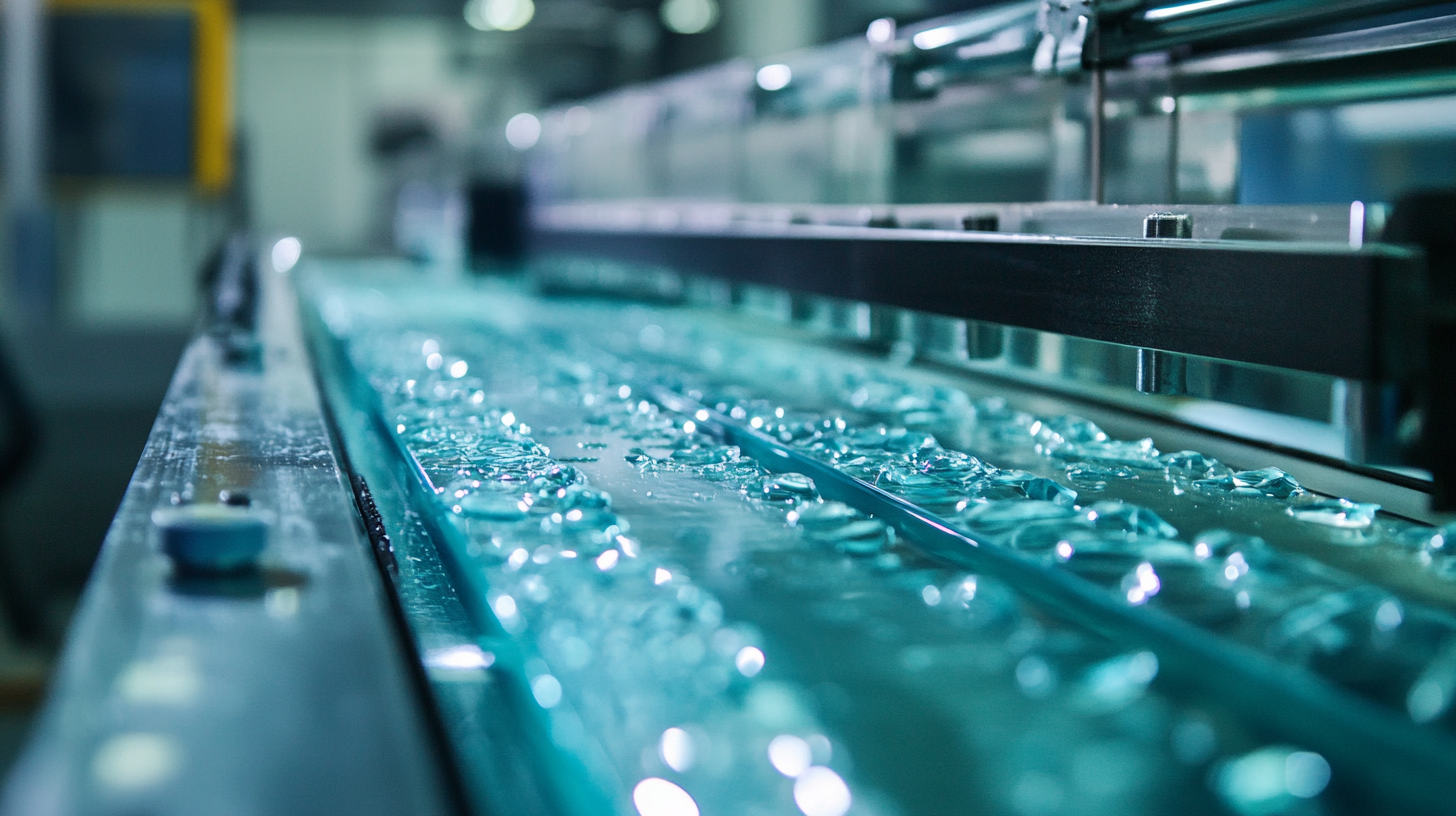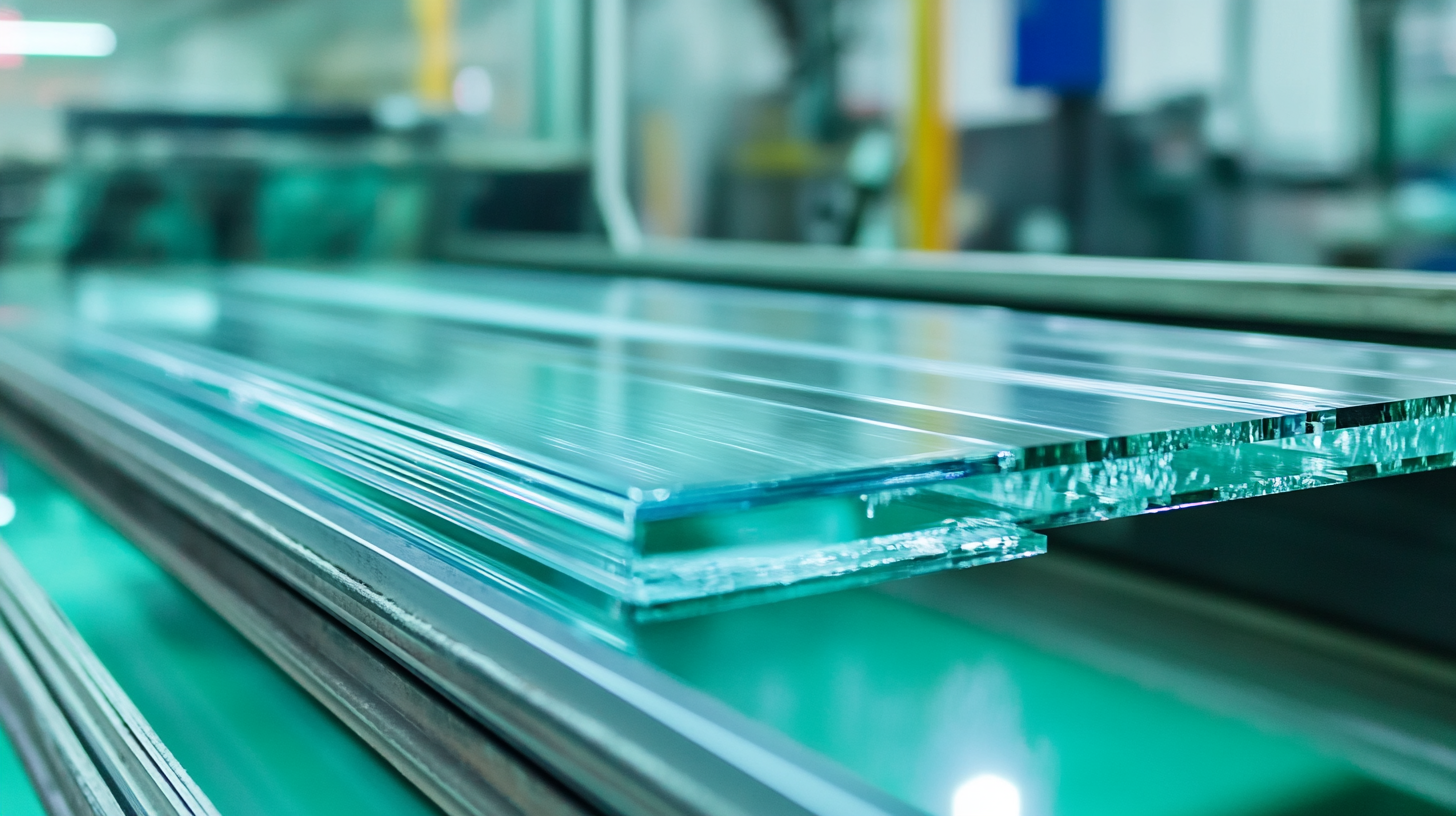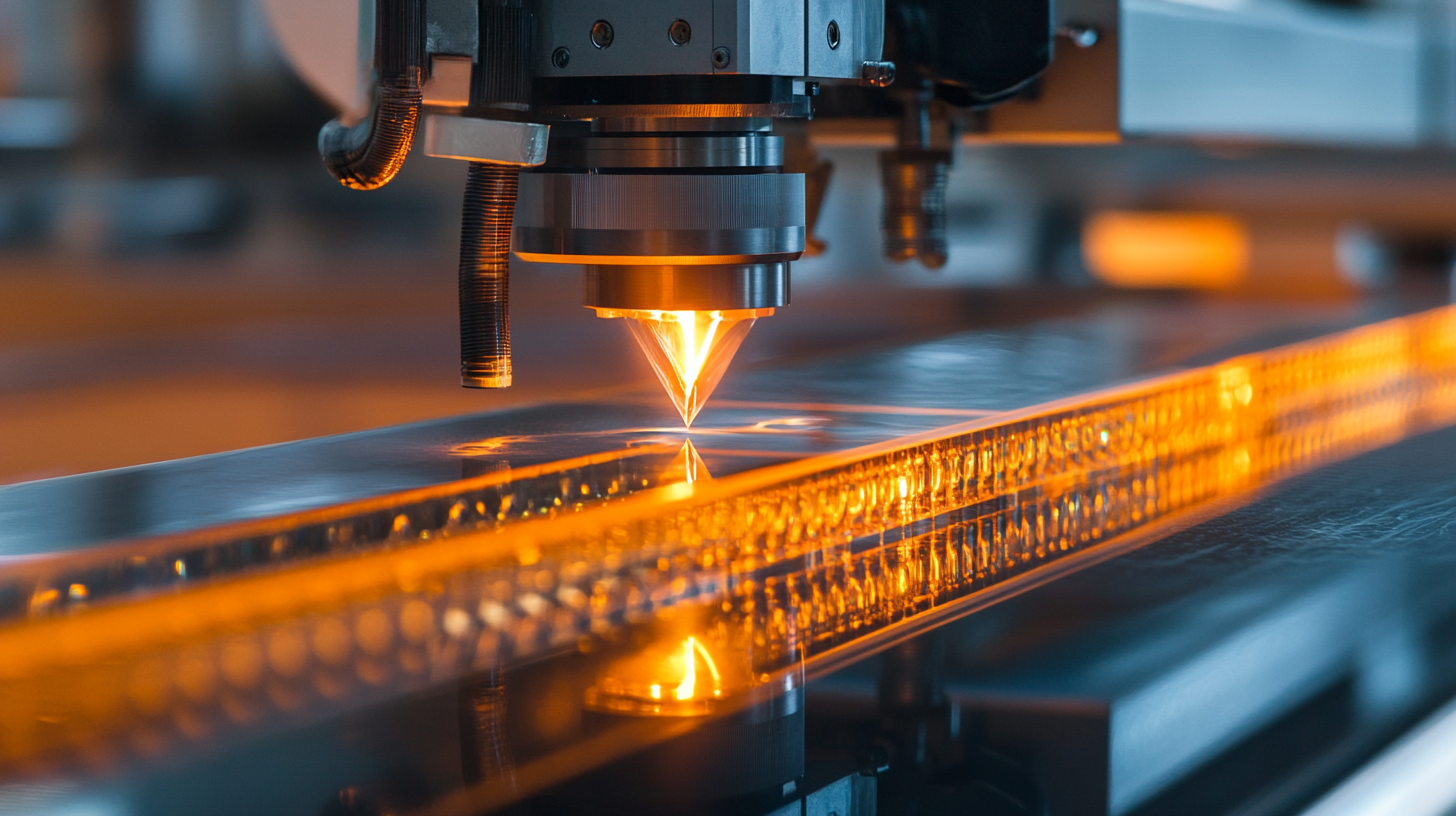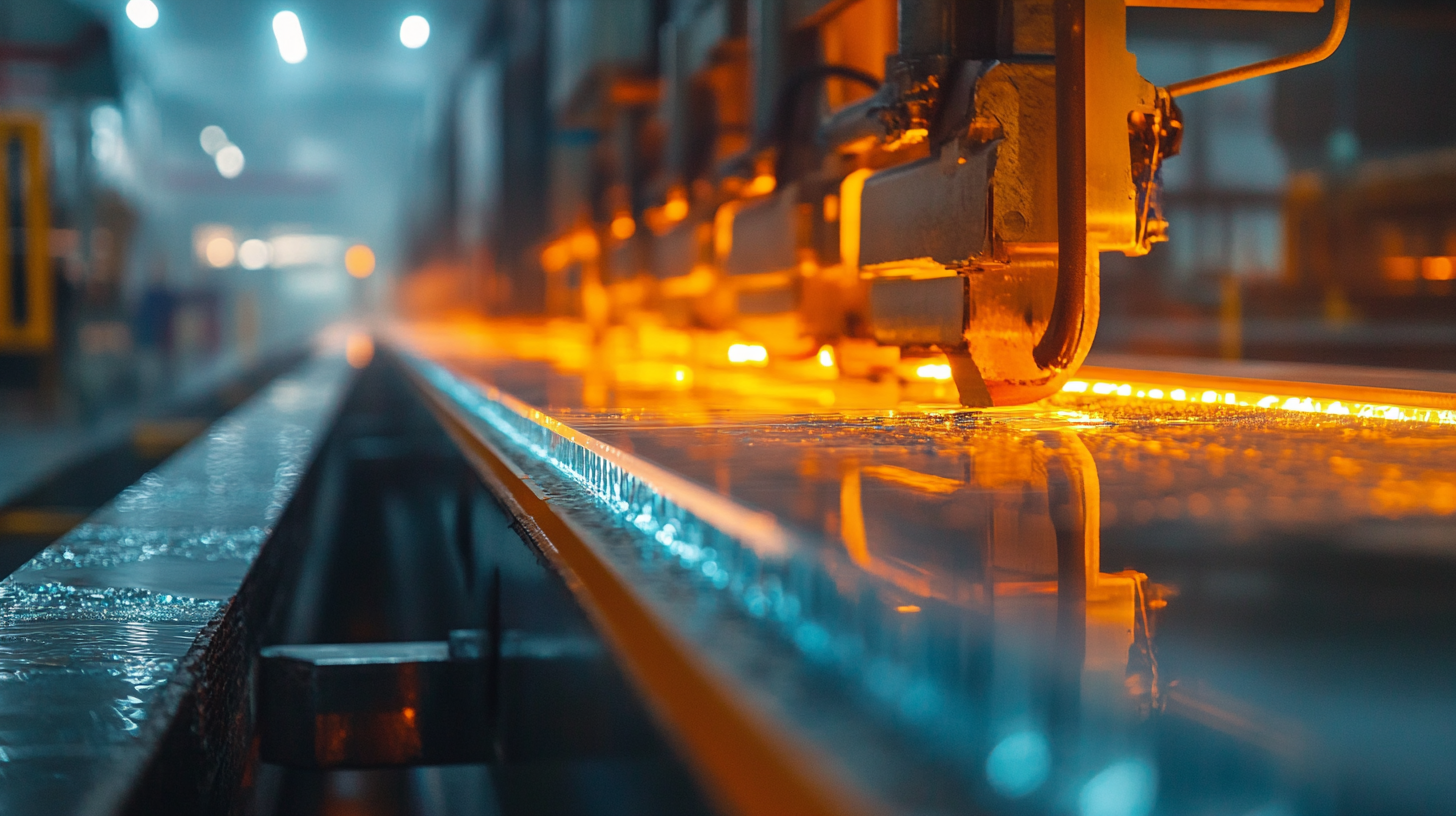Five Unique Applications of Glass Edging Processing Machines that Can Transform Your Business
In the ever-evolving landscape of the glass manufacturing industry, the demand for precision and aesthetic appeal has never been higher. According to a report by Research and Markets, the global glass processing machinery market is projected to reach $9.2 billion by 2025, growing at a CAGR of 5.4%. A significant contributor to this growth is the Glass Edging Processing Machine, which enables manufacturers to achieve finely polished edges that are not only functional but also enhance the visual appeal of glass products. This technology is crucial in a wide range of applications, from architectural glass to decorative home furnishings, highlighting its versatility and importance in the industry.
As businesses strive to differentiate themselves in a competitive market, embracing innovative technologies like the Glass Edging Processing Machine can lead to transformative operational efficiencies. The precise edging provided by these machines reduces waste, improves product quality, and accelerates production timelines, according to a study by Transparency Market Research. By leveraging advanced edging techniques, companies can enhance their product offerings and meet the growing consumer expectations for quality and design. In this blog, we will explore five unique applications of glass edging processing machines that can revolutionize your business and set you apart in the marketplace.

Innovative Customization in Glass Design: Meeting 2023 Market Demand
The demand for innovative glass design solutions has surged in 2023, driven by advancements in technology and the rising expectations of consumers. Companies are now looking to glass edging processing machines to create bespoke products that not only meet aesthetic desires but also fulfill functional requirements. These machines enable the precise customization of glass edges, allowing businesses to differentiate themselves in a competitive market. For instance, the development of XR automotive windows illustrates how specialized glass can enhance user experience while contributing to safety and style.
In parallel, the world's leading brands are embracing the melding of craftsmanship and technology. This year, numerous initiatives, including design projects celebrating artisanal skills, highlight the importance of integrating traditional methods with modern innovation. The ability to transform ordinary glass into stunning architectural elements or functional automotive parts opens new avenues for creative endeavors. As the market evolves, the focus will increasingly shift towards creating glass products that are not only visually striking but also contribute to sustainability and functionality in various applications.
Given this landscape, glass edging processing machines are positioned as crucial tools for businesses aiming to transform their offerings. By harnessing these technologies, companies can meet contemporary market demands and produce unique glass applications that resonate with discerning consumers, ultimately redefining what is possible in glass design.

Enhancing Safety Features: The Role of Edging in Architectural Glass
The significance of glass edging processing machines in advancing safety features in architectural glass cannot be overstated. Edging not only enhances the aesthetic appeal of glass products but also plays a vital role in improving their structural integrity. When glass edges are properly treated, they become less susceptible to chipping and breakage, thus reducing the risk of injury. This is crucial in environments where large glass surfaces are used, such as office buildings, shopping centers, and residential spaces.
Incorporating edging technology into architectural glass applications brings an additional layer of safety that is often overlooked. For instance, rounded or polished edges can significantly minimize the chances of accidents caused by sharp edges, making glass installations safer for both occupants and pedestrians. This is particularly important in high-traffic areas where the likelihood of contact with glass surfaces is heightened. Moreover, many safety regulations and building codes increasingly emphasize the need for proper glass edging, driving further adoption of this technology across the industry.
Furthermore, edging can improve the durability of glass in different applications, extending its lifespan. By fortifying the edges, glass becomes more resistant to environmental factors and mechanical stress, reducing maintenance costs and enhancing performance. As businesses prioritize safety and efficiency, the role of glass edging processing machines emerges as not just a manufacturing necessity but as an essential component of modern architectural design.

Streamlining Production Processes: Efficiency Gains from Advanced Glass Edging
In today’s competitive market, businesses are continuously seeking innovative ways to streamline their production processes. One significant advancement that has gained traction is the implementation of glass edging processing machines. These machines not only enhance the quality of the finished product but also significantly boost operational efficiency, allowing businesses to thrive in a fast-paced environment.
Advanced glass edging processing machines utilize cutting-edge technology to automate repetitive tasks, reducing the time and labor required for manual edging processes. This automation minimizes human error, ensuring that every piece of glass achieves the precise specifications needed for various applications. By integrating these machines into production lines, manufacturers can accelerate their output, helping to meet growing consumer demands without sacrificing quality.
Moreover, the versatility of modern glass edging machines enables businesses to handle a wider range of glass products with ease. From decorative panels to functional architectural components, these machines can be customized for various project requirements. The ability to pivot quickly between different styles and designs means companies can respond to market trends more swiftly, enhancing their competitive edge while simultaneously maximizing resource utilization. Adopting such advanced technologies positions businesses not just as manufacturers, but as innovators in the glass industry.

Eco-Friendly Practices: Sustainable Glass Processing for Modern Businesses
As eco-awareness grows among consumers and businesses alike, the glass processing industry is experiencing a shift towards sustainable practices. Incorporating eco-friendly methods in glass edging processing not only reduces environmental impact but also enhances a company’s appeal among discerning clients who prioritize sustainability. This shift is imperative for modern businesses looking to stay relevant and responsible.
Glass edging processing machines are now being designed with energy efficiency in mind. By utilizing advanced technologies, these machines minimize energy consumption during operations. Moreover, improved water recycling systems integrated into these machines significantly reduce waste, allowing companies to rely on fewer resources while maintaining production quality. Such approaches align perfectly with the increasing demand for sustainable manufacturing practices.
Another innovative aspect of eco-friendly glass processing is the use of sustainable materials in machines themselves. Manufacturers are adapting their machinery with recyclable components, further emphasizing the importance of sustainability in production. By choosing machines that prioritize the use of eco-friendly materials, businesses not only contribute to the reduction of their carbon footprint but also demonstrate their commitment to environmental stewardship, thus attracting like-minded customers and partners.
Ultimately, adopting these sustainable practices in glass edging processing not only transforms production efficiency but also aligns a business with the growing global commitment to environmental sustainability, paving the way for future growth and success in an eco-conscious marketplace.
Market Growth Insights: The Impact of Glass Edging on the Industry's Revenue Streams
The glass edging processing industry has seen remarkable growth in recent years, driven by the increasing demand for precision-edged glass across various sectors. This demand is not just limited to construction and architecture; it extends to the automotive industry, furniture design, and even the high-end electronics market. The versatility of glass edging processing machines allows businesses to cater to a wider range of customer needs, thereby enhancing their revenue streams significantly.
As companies adopt advanced glass edging solutions, they unlock new market opportunities. These machines enable precise customization, which is becoming essential in industries that prioritize aesthetics and safety. For example, in the automotive sector, the demand for intricately edged glass components is growing as manufacturers seek to combine design excellence with functionality. Meanwhile, the furniture industry is similarly evolving, with consumers looking for unique, beautifully crafted glass elements that enhance their living spaces.
Moreover, the integration of automated glass edging technology not only boosts operational efficiency but also reduces material waste. This leads to cost savings and increased profitability, making it an attractive investment for businesses aiming to expand their market share. As the glass edging processing market continues to evolve, companies that leverage these advancements will find themselves at a competitive advantage, reshaping their revenue models to capitalize on this burgeoning industry.

Home
About Us
Products
UPVC PVC Window Machine
Aluminum Window Machine
Glass Cutting Machine
Glass Edging Machine
Insulating Glass Machine
Glass lifting machine
Glass Washing Machine
Glass Laminating Machine
Glass Sandblasting Machine
Glass Drilling Machine
CNC Glass Working Center
CNC Non-Metal Cutting Machine
The Other Glass Machinery
Application
Download
News
Contact Us




